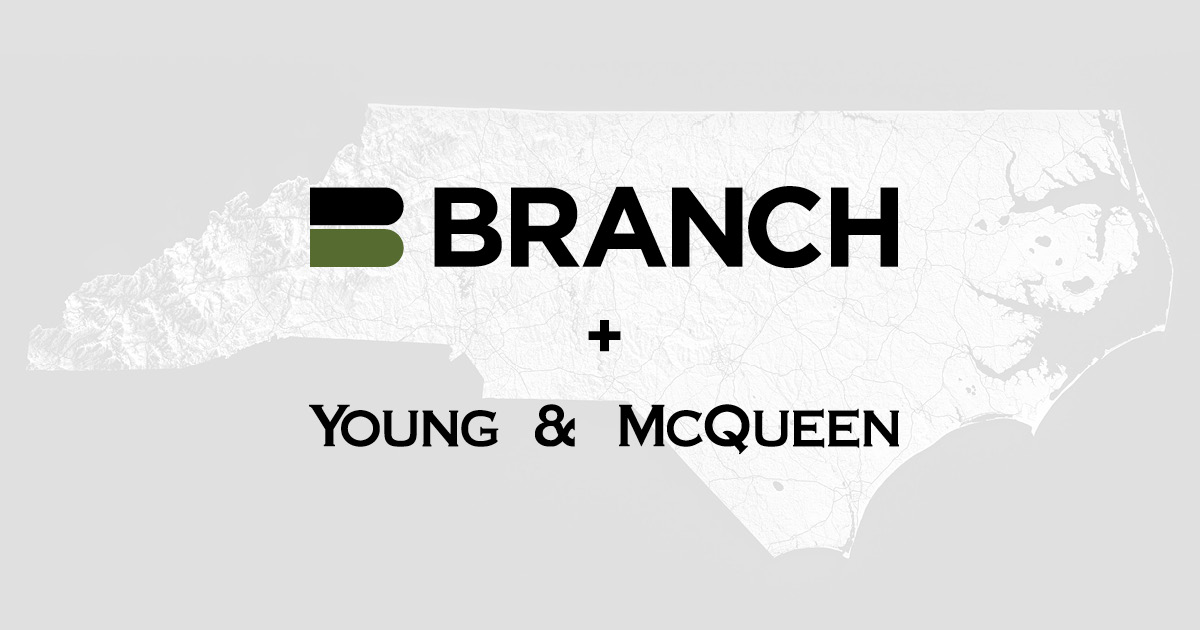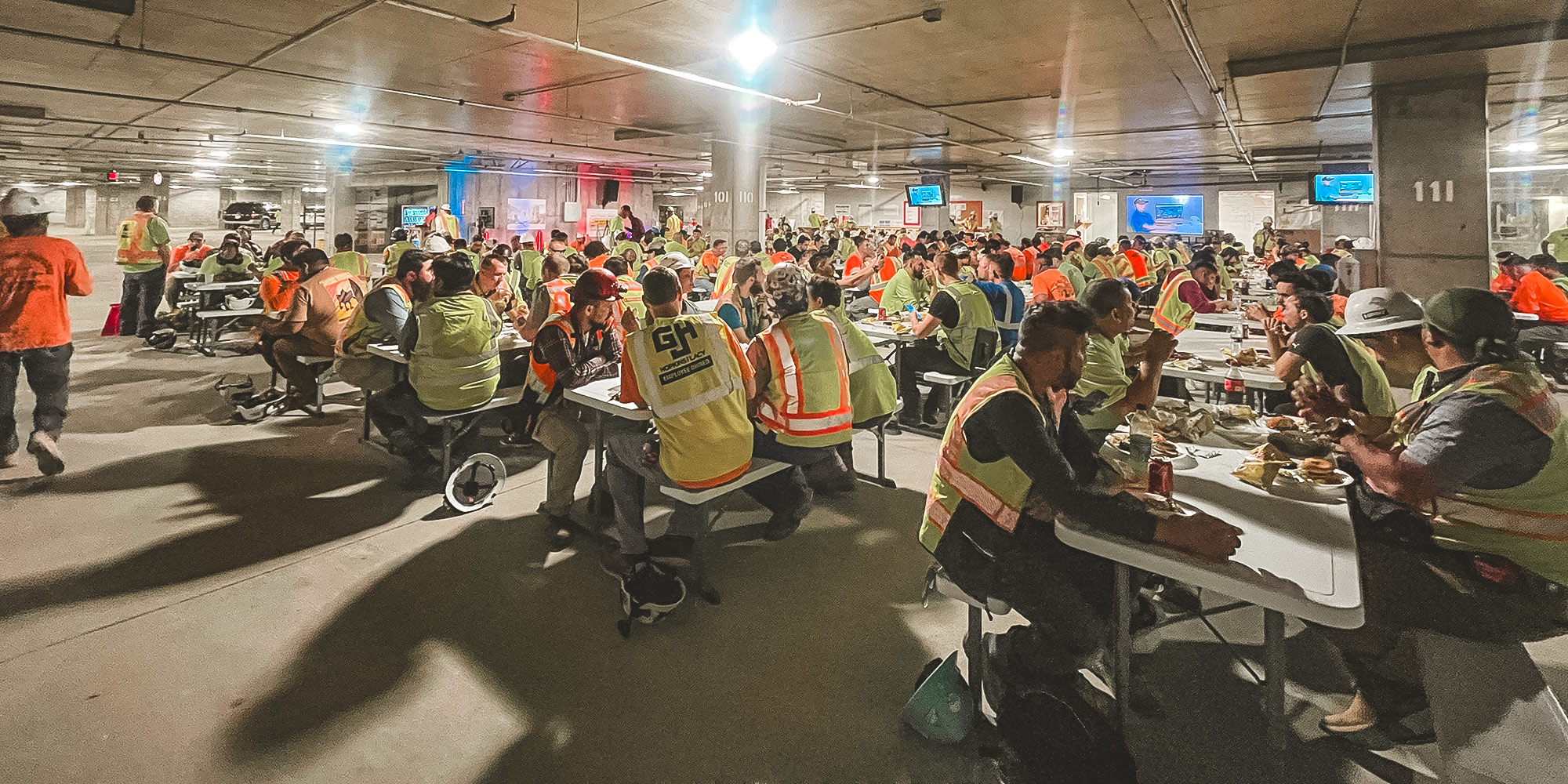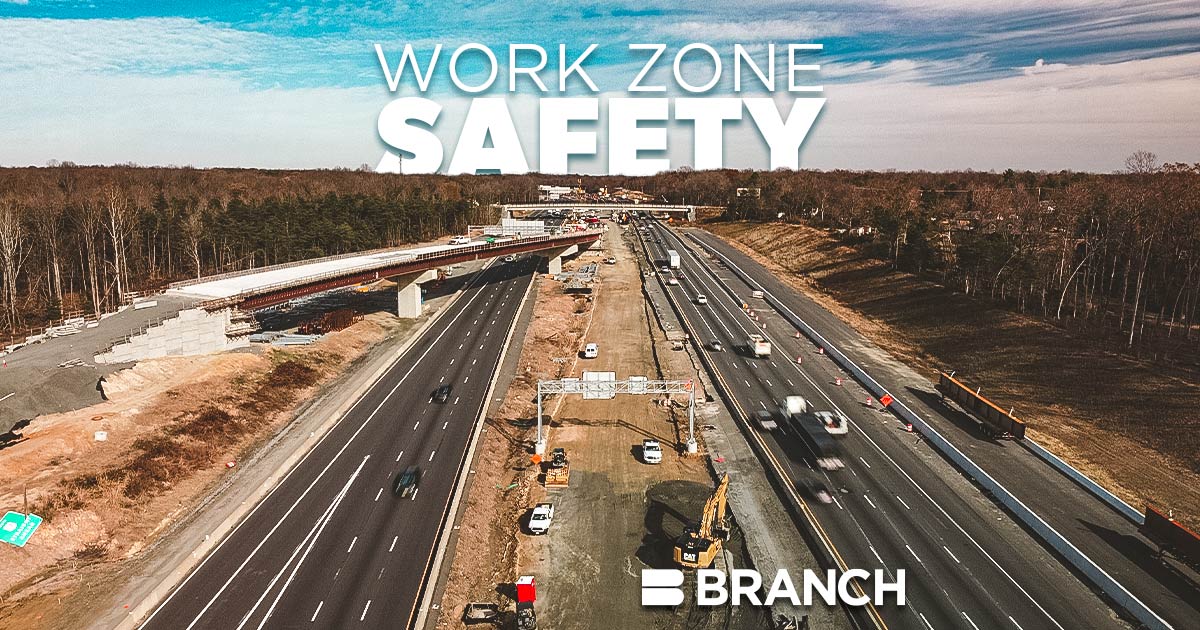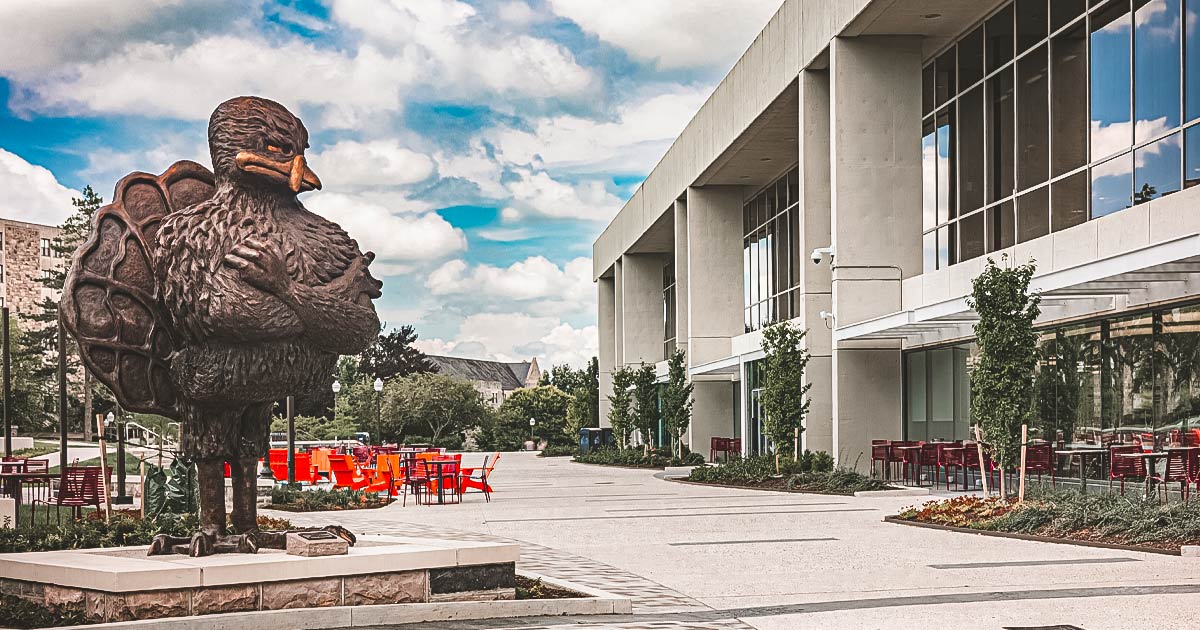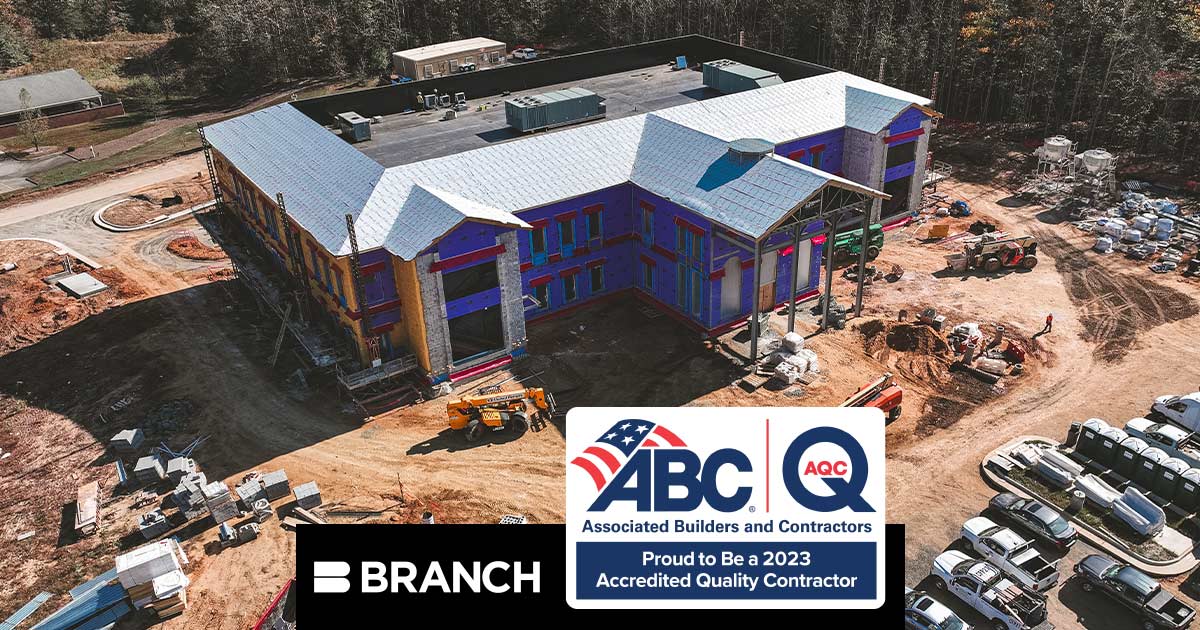Few companies can brag that they have won the same award three years in a row.
Few companies can brag that they have won the same award three years in a row. Branch Civil can.
Jamestown Parkway, a 3.88-mile, $81 million bid build job for NCDOT, is the third Branch project to be named a Top 10 road project by Roads & Bridges Magazine. This year’s award follows 2021’s C.F. Harvey Parkway in Lenoir County, NC and 2020’s Maysville Bypass in Jones County, NC.
While certainly not the largest or most complicated project in our books, the Jamestown Parkway team defined the odds of overcoming several obstacles and challenges and still delivered the project on time, with the parkway opening to traffic on December 2, 2022.
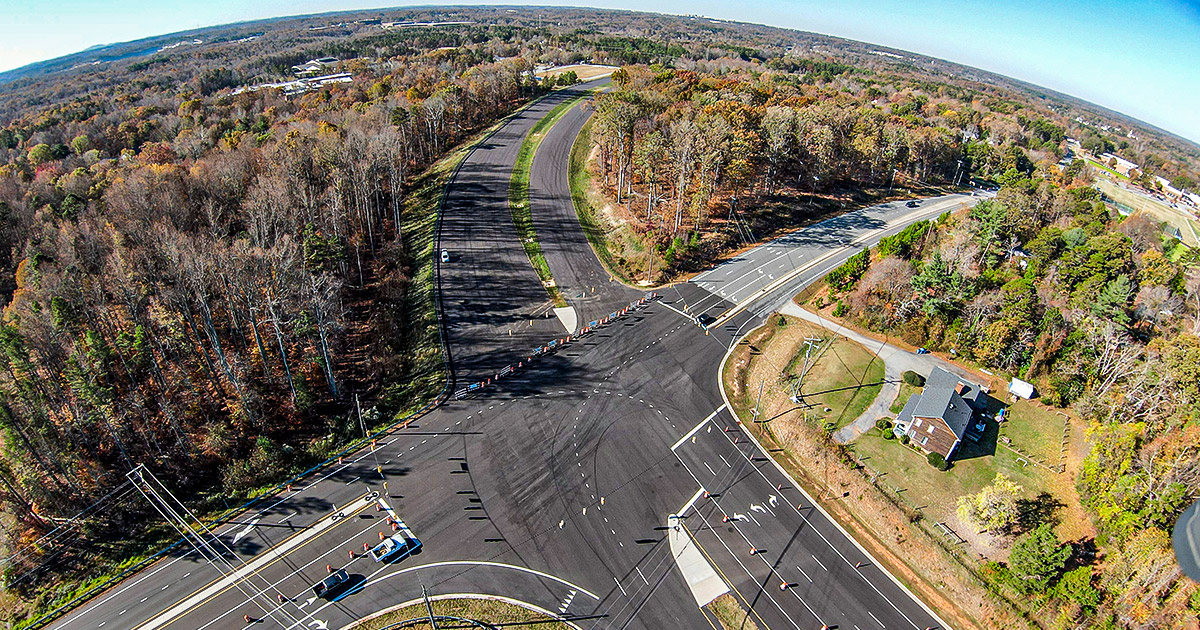
Challenge #1: Hurricanes and Snow
Hurricanes Florence and Matthew hit the North Carolina coast in 2018 when the team was in the early stage of clearing and grubbing, erosion and river floodplain controls, and stream diversions. All the work had to be redone. Multiple times, the team had to drain ponds and rebuild stream diversions. Nevertheless, the project never had an erosion discharge or a failing inspection score from NCDOT. Moreover, many of the erosion control basins and stream diversions were considered “textbook” by NCDOT Roadside Environmental Unit, and pictures were taken for future best management practice presentations.
In December of 2018, the area received an abnormal 12+ inches of snow, followed directly by six inches of rain. Again, the erosion and sedimentation control facilities were damaged, but no erosion discharge was recorded. After the storm, NCDOT granted time extensions to projects affected by the storm events, but Jamestown Parkway did not need one because recuperated all delays through acceleration and resequencing.
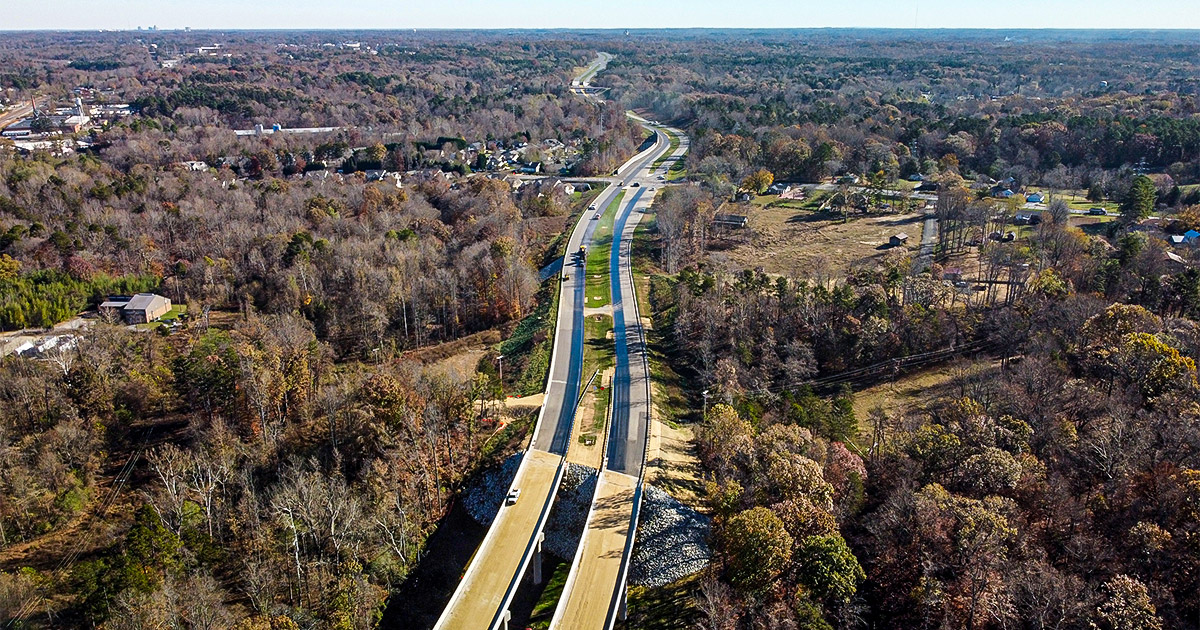
Challenge #2: Utility Delays
Public Utility crews responsible for relocating their facilities were demobilized to repair damage caused by the hurricanes along the Atlantic coast. It took over a year and a half to get utility crews back, and even then, the resource commitment was sparse. During that time, our team progressed the project through innovative redesign, tight communication and coordination, and aggressive prosecution of accessible work.
The team graded and excavated to the absolute limit of utility conflict, moving over 1 million CY of material out of the planned 1.1 million. Field crews also redesigned and proposed new storm drain and sewer plans to the city and state to keep the job going – laying approximately 87% of the linear feet before the utility relocations were completed. The crew paved around overhead utility poles, adjusted underground pipes after locating utility conflicts, and re-phased several sections to keep material movement and placement ongoing while maintaining safe public travel. Branch facilitated weekly meetings with and key stakeholders to highlight conflicts, prioritize the relocation sequence, and explain the schedule and current work areas. At times, utilities were not moved until days before contract deadlines, but we met all deadlines.
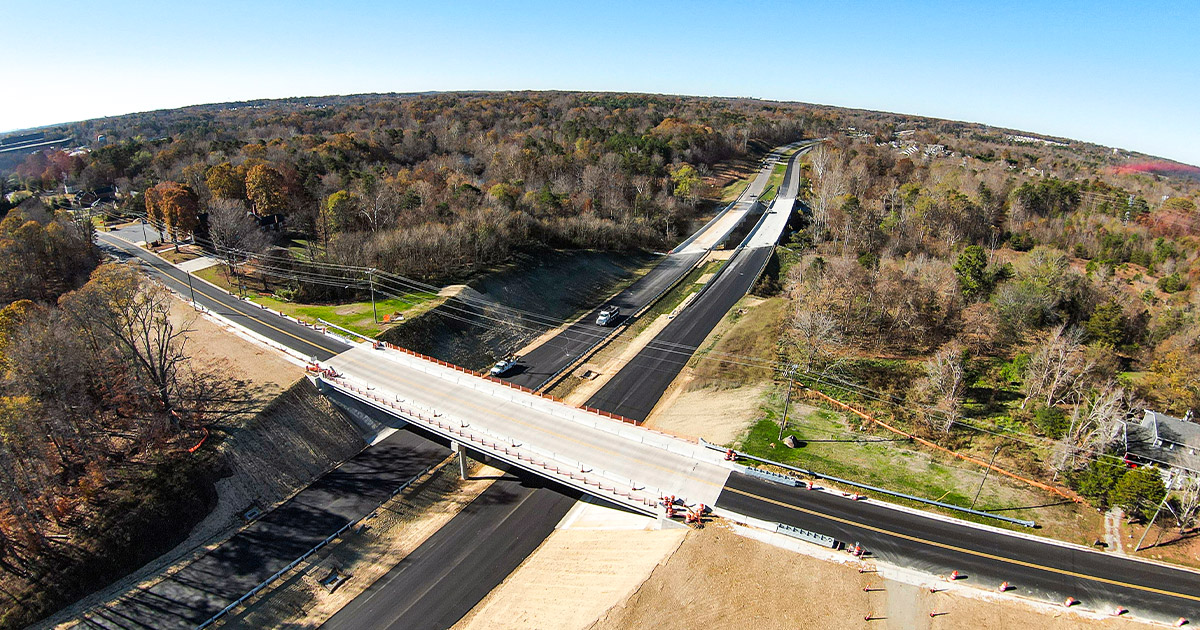
Challenge #3: COVID-19
COVID-19 shut the world down during two construction seasons, but it helped us. Due to less traffic on the roads, our team assisted NCDOT in traffic analysis and identifying potential work areas to allow work during the day instead of at night, which allowed the team to be safer and more productive. We only lost one week because of positive COVID-19 exposure. By the end of 2020, the crew was so far ahead that they had to finally had to pause for utility relocation. During this waiting period, crews assisted other jobs in the region and helped push three nearby projects across the finish line either early or on time.
Challenge #4: Safety
With the large scope of work, re-sequencing work to avoid delays, significant coordination with others working in tandem to maintain schedule around potential delay issues, and exposure to abnormal working conditions, project safety was a well-discussed topic. From 2019 through 2021, our Jamestown Parkway project was a top safety-performing job in the company, having no incidents during this time and earning the top spot for several months. Being a newcomer to this area of North Carolina, initial subcontractor safety compliance was a struggle. Field supervision quickly took matters into their own hands and effectively instilled the “Branch Way” throughout the site, including new hires and subcontractors, resulting in most of this safety success.
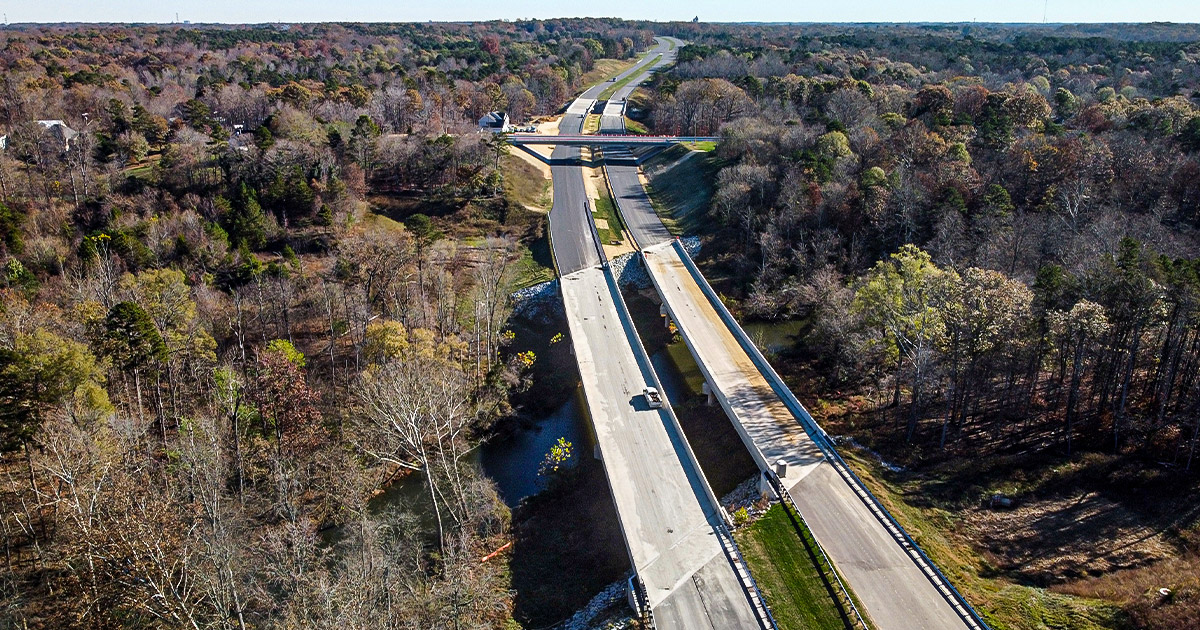
Challenge #5: Detours
As part of the contract provisions, we could close a road down for 270 days, remove approximately a 25-foot deep cut, and build a bridge back in the original alignment. However, before beginning, NCDOT recognized that the nearby train depot blocked the road several hours a day. If we closed the road, 180 homes and a local sheriff’s department would no longer have access to their properties.
Branch worked with the DOT to develop a number of solutions. Unfortunately, COVID-19 hit right in the middle of this redesign, delaying the critical path by two years. After multiple iterations, constructibility reviews, and discussions with the public, the new plan was to build an on-site detour. NCDOT released plans to build a new detour route within just a few feet of the existing road and a new bridge. Branch partnered with a subcontractor to cut the existing road on a vertical face using a 28-foot tall soil nail wall, and then a wire basket wall was built for the detour. The project crews mitigated eight months of the detour design delay by working on two different phases of the detour and bridge construction simultaneously. We also closely coordinated the detour construction to mitigate downtime by performing work on the detour in parallel instead of on a linear schedule. Once the detour was built, and traffic switched, grade crews allowed the bridge crew early access to build the bridge while blasting and excavation were happening below the footprint of the bridge superstructure. Similar tactics were taken during the roadway-to-bridge tie-in process, eliminating several additional shifts by performing bridge and grade work simultaneously.

